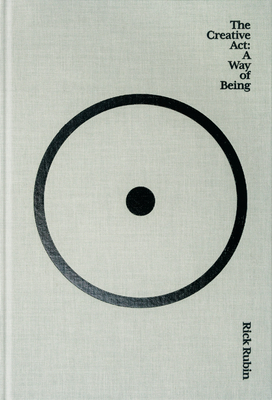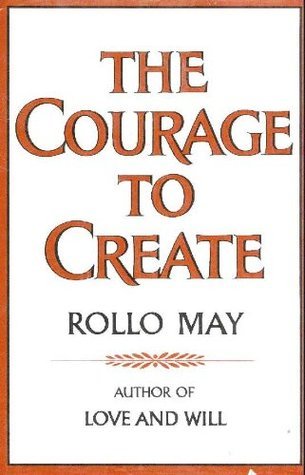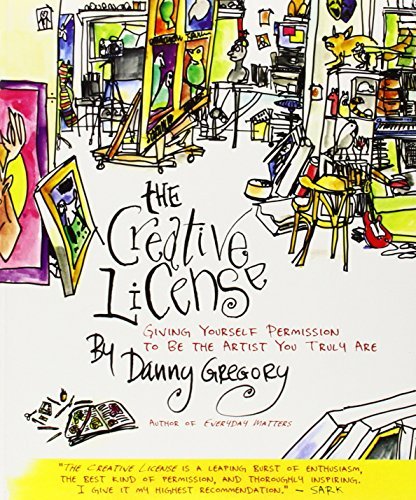
The Creative Act: A Way of Being
Book Description
Unleash the power of your imagination and embark on a transformative journey through the lens of creativity. With each page of 'The Creative Act: A Way of Being,' Rick Rubin invites you to explore the delicate interplay of art, intuition, and the human experience. Revelations flow like a rhythm, igniting passion and challenging perceptions of what it means to create. This isn’t just a guide—it's a manifesto that elevates the everyday into the extraordinary. How far can your creativity take you when you dare to see the world anew?
Quick Book Summary
In "The Creative Act: A Way of Being," Rick Rubin, legendary music producer and creative visionary, distills his philosophy of creativity into a series of meditative reflections and principles. Rather than prescribing specific exercises or rules, Rubin offers a contemplative approach, urging readers to embrace openness, intuition, and the present moment. The book explores creativity not just as an endeavor, but as a mode of living available to all, regardless of artistic expertise. Through personal insights and gentle provocations, Rubin challenges conventions around achievement, perfection, and originality, inviting us to strip away ego and connect authentically with ourselves, our environment, and creative possibilities. The result is an accessible yet profound guide that inspires readers to see every aspect of existence—whether making art, music, or simply living—as an act of creative engagement.
Summary of Key Ideas
Table of Contents
Creativity as a Universal State of Being
Rick Rubin’s book encourages readers to recast creativity as a natural way of experiencing and interpreting the world, rather than a rarefied skill reserved for artists. Rubin’s perspective is rooted in the belief that creative energy exists all around us, available for anyone willing to attune themselves and cultivate sensitivity. By shifting focus from end results to the act of creation itself, Rubin reframes creativity as a state of being—one in which life and art continually inform each other. He invites readers to approach every task and interaction with the same wonder, curiosity, and engagement that characterize artistic pursuits.
Embracing Intuition and Openness
Central to Rubin’s philosophy is the value of intuition and openness in the creative process. He advocates for the abandonment of rigid plans and preconceived notions, encouraging a willingness to trust spontaneous ideas and subtle impulses. Rubin highlights the importance of entering a state of receptivity, where insights can arise naturally and unexpectedly. This openness, he suggests, is what allows for genuine originality: true breakthroughs happen when creators surrender control, let go of expectations, and allow themselves to be guided by the moment.
Letting Go of Perfection and Ego
One major obstacle to fulfillment in creativity, Rubin argues, is the ego’s desire for validation, recognition, and flawless output. He underscores the need to let go of perfectionism and self-judgment, and to accept imperfections as essential elements of the creative act. Rubin shares that the most authentic and resonant creations often emerge when artists release their self-imposed standards and embrace vulnerability. This openness creates the space for innovation and honest self-expression, dissolving barriers between creator, creation, and audience.
Engaging with the Present Moment
Rubin weaves mindfulness deeply into his creative philosophy, emphasizing that presence is vital to both art and life. Engaging fully with the present moment, without distraction or fear of judgment, enables creators to capture fleeting insights and imbue their work with vitality. Rubin offers gentle prompts for cultivating mindfulness—such as attentive listening or conscious breathing—to create fertile ground for creative inspiration. By treating every experience as an opportunity for creativity, readers can transform the ordinary into the extraordinary.
The Artist’s Relationship to the World
Finally, Rubin positions the creative act as a bridge to broader connection: with the world, other people, and the creative force itself. He advises aspiring creators to remain humble, collaborative, and attuned to the environment’s influences. Art, according to Rubin, is not made in isolation but is always in dynamic dialogue with its context. Appreciating this interdependence expands our sense of possibility—not just in artistic realms but as a foundational way of being alive, curious, and engaged with the endless potential of existence.
Download This Summary
Get a free PDF of this summary instantly — no email required.





